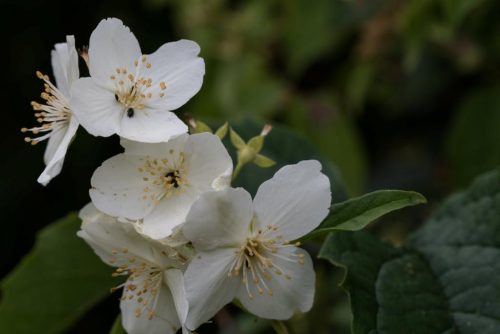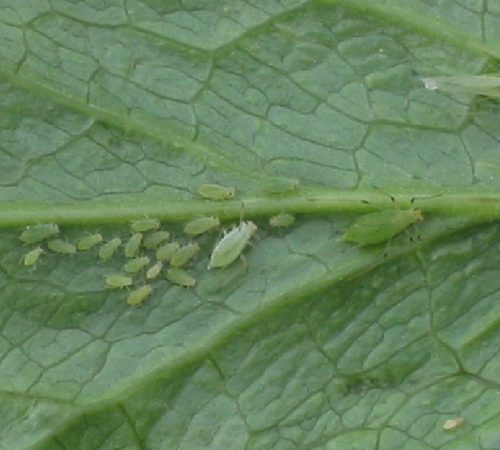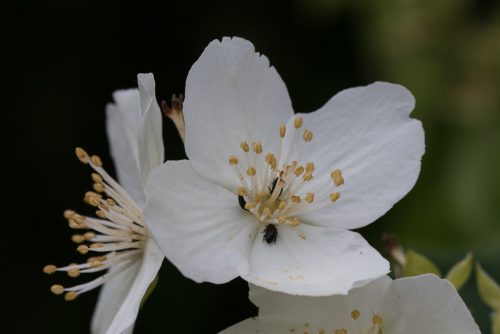Mock orange: a deciduous, hardy shrub; native to southern Europe and is now found throughout the northern hemisphere.
Also knows as:
English dogwood
Philadelphus
Sweet mock orange
Related to:
Deutzia
You are viewing the mobile-adapted version of the page.
The one for tablets, laptop and desktop also provides general information, such as origin, toxicity and cultivation.

- Mock orange is not poisonous, even to pets.
Mock orange – (Philadelphus coronarius); a deciduous, hardy shrub, belonging to the hydrangea- family (Hydrangeacae). Mock orange is native to southern Europe and is now found throughout the northern hemisphere. The shrub is a fast grower, can grow up to five feet with a matching width. Mock orange blooms with strong-smelling, white flowers. Flowering time in late May/early June – attractive to bees, bumblebees and butterflies.
Mock orange likes slightly moist, calcareous soil. Preferably in a spot in full sun or partial shade.
Mock orange is a strong shrub: it tolerates poor soil, drought, air pollution and sea air well. Also, the shrub is not very susceptible to diseases and pests; except for leaf beetles and aphids. These are almost always present on Mock orange.
Firm pruning every three years keeps the shrub in shape. Pruning is best done after flowering in late August, early September. Older, woody branches can be pruned away to the ground; younger wood to three-quarters of its height. Remove dead and damaged branches as well as crossing branches.
During periods of drought, water Mock orange on sandy soil regularly.
Bugs

Deformed and crumpled leaf: aphids. Often they are the Black bean aphid (Aphis fabae).

Tiny beetles hide in the flowers and feed on the flower and young leaves: Flea beetle (Psylliodes).
Fungi & diseases
Leaf drops prematurely, initially yellow spots appear on the leaves, then the leaves die. Leaves may yellow and wilt prematurely: Bacterial canker (Pseudomonas syringae).
Other
Leaf yellowing (chlorosis): might be a sign of deficiency, for example magnesium. See Deficiency diseases.
